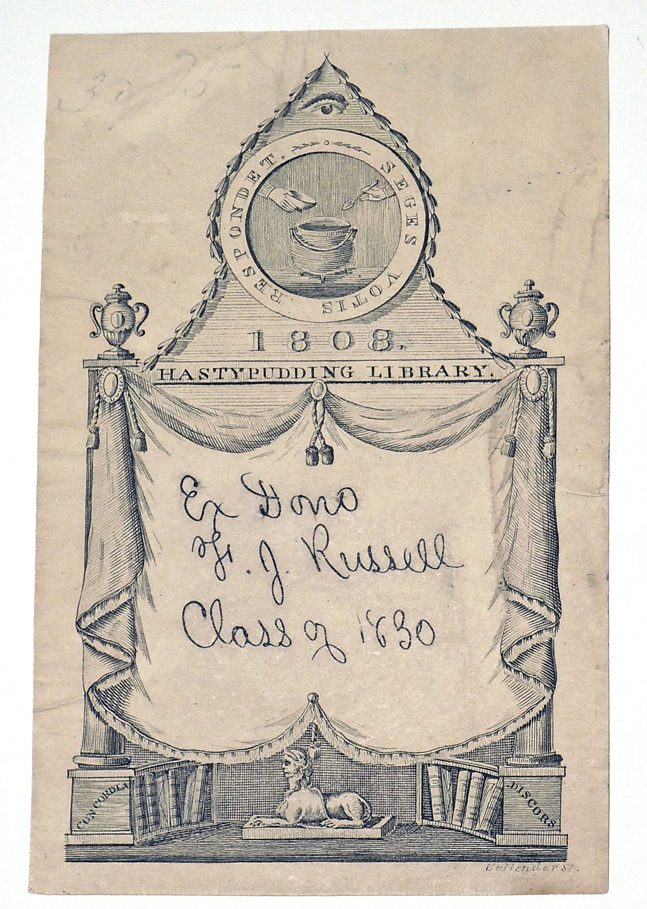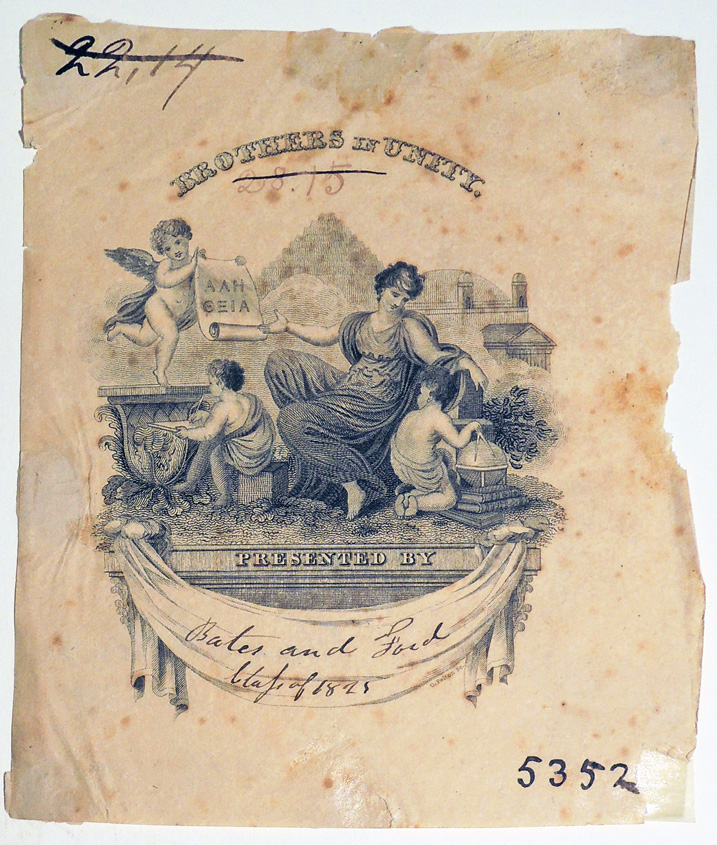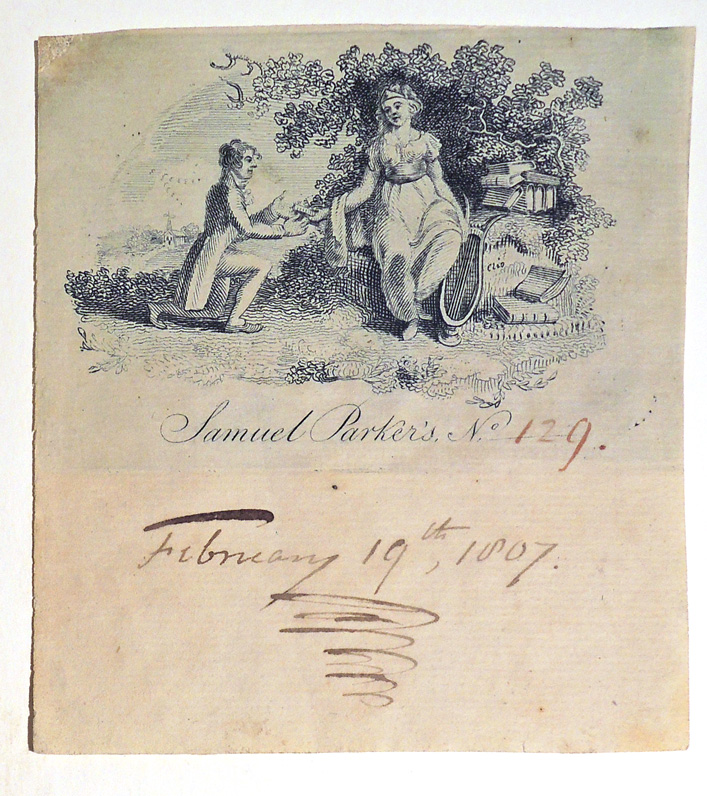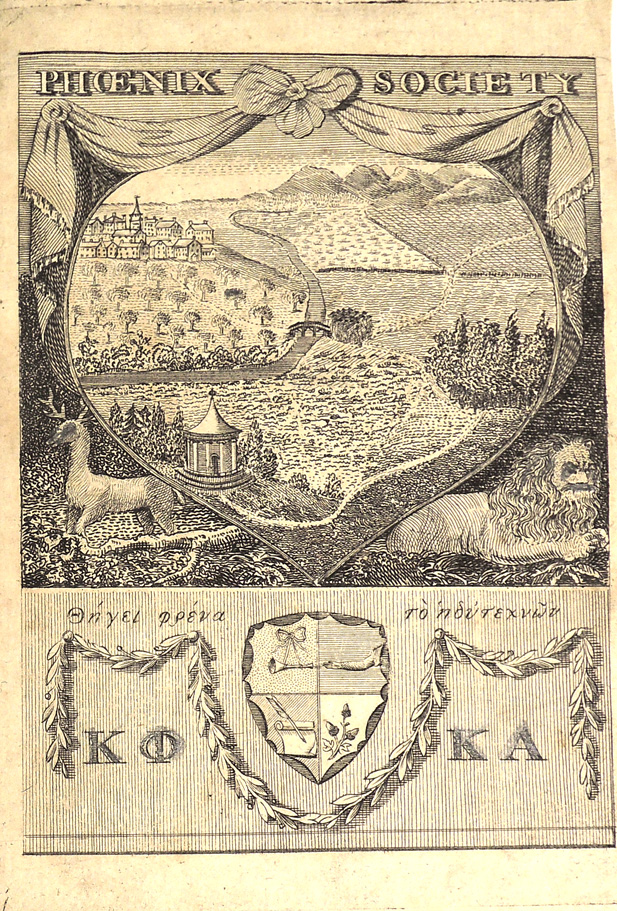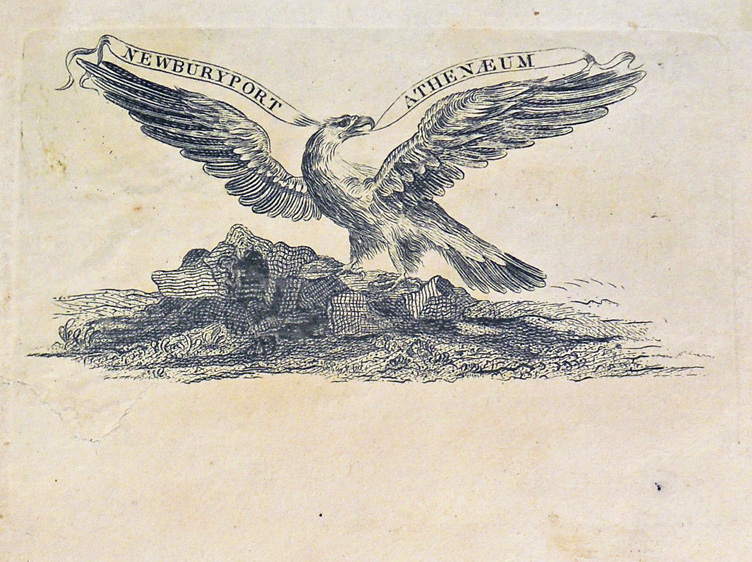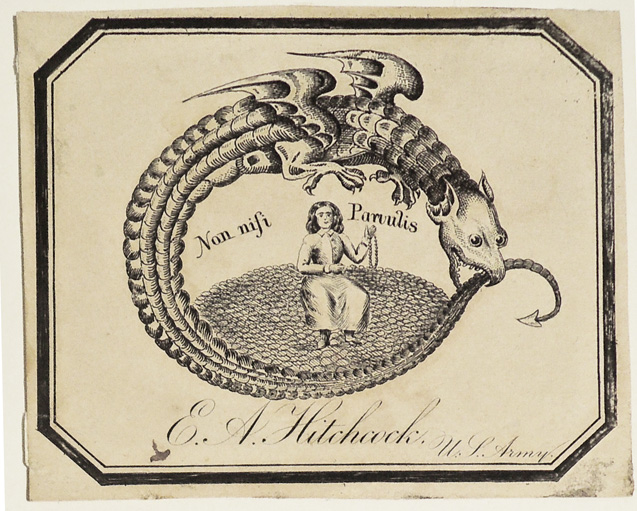 Bookplate of Ethan Allen Hitchcock (1798-1870), U.S. Army, “Non nisi parvulis [Not unless a child], 19th century. Etching and engraving, Graphic Arts Collection Early American Bookplates
Bookplate of Ethan Allen Hitchcock (1798-1870), U.S. Army, “Non nisi parvulis [Not unless a child], 19th century. Etching and engraving, Graphic Arts Collection Early American Bookplates
A reference question led to our small but significant collection of early American bookplates. Here are a few both for institutions and individuals.
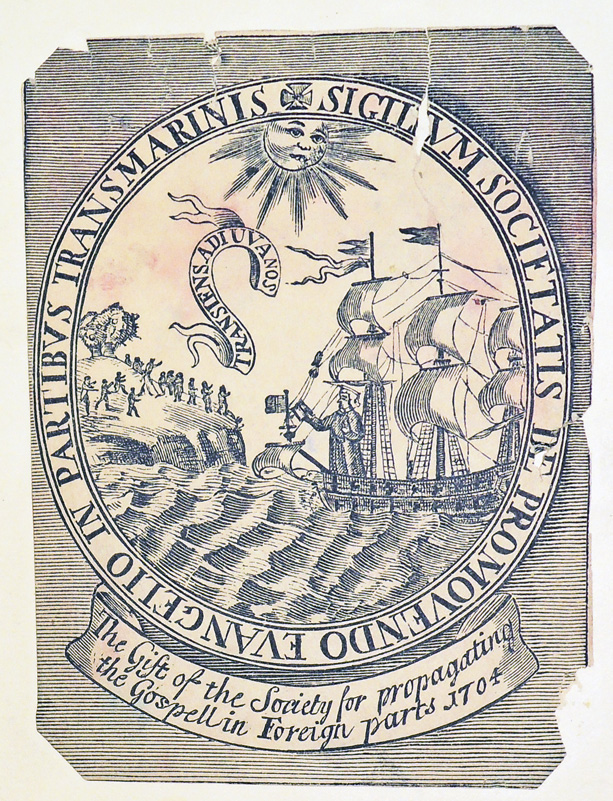 The Gift of the Society for propagating the Gospell in Foreign parts 1704
The Gift of the Society for propagating the Gospell in Foreign parts 1704
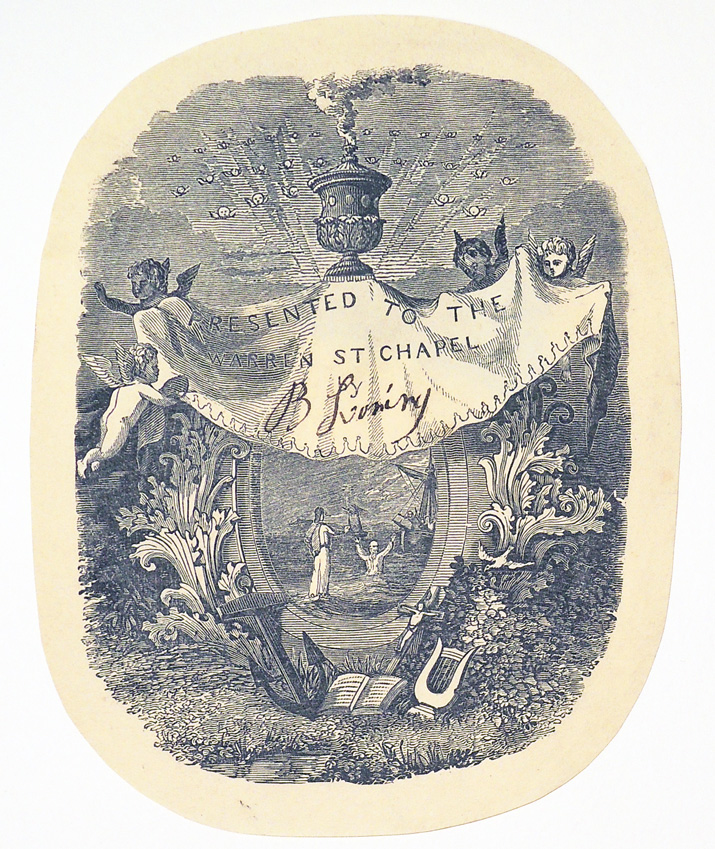 Presented to the Warren St Chapel
Presented to the Warren St Chapel
 John Skinner, Hartford, and S. Marble, Orange Street, New Haven
John Skinner, Hartford, and S. Marble, Orange Street, New Haven
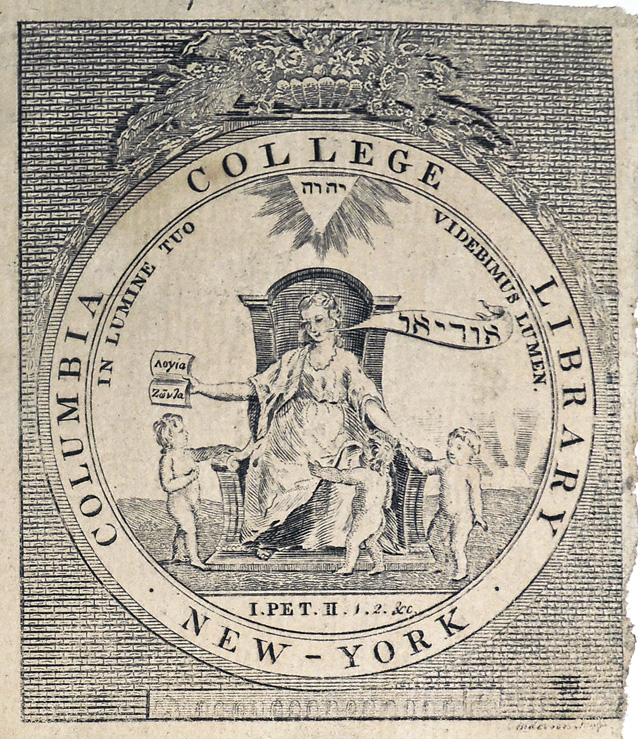 Columbia College Library, New-York. “In Lumine Tuo Videbimus Lumen” [In thy light we shall see light, Psalms 36:9]
Columbia College Library, New-York. “In Lumine Tuo Videbimus Lumen” [In thy light we shall see light, Psalms 36:9]
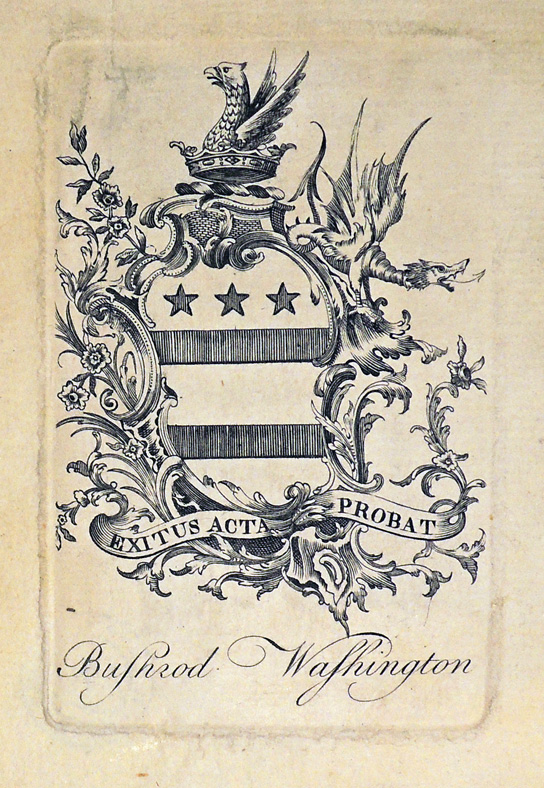 Bushrod Washington (1762–1829), “Exitus acta probat” [The outcome justifies the deed].
Bushrod Washington (1762–1829), “Exitus acta probat” [The outcome justifies the deed].
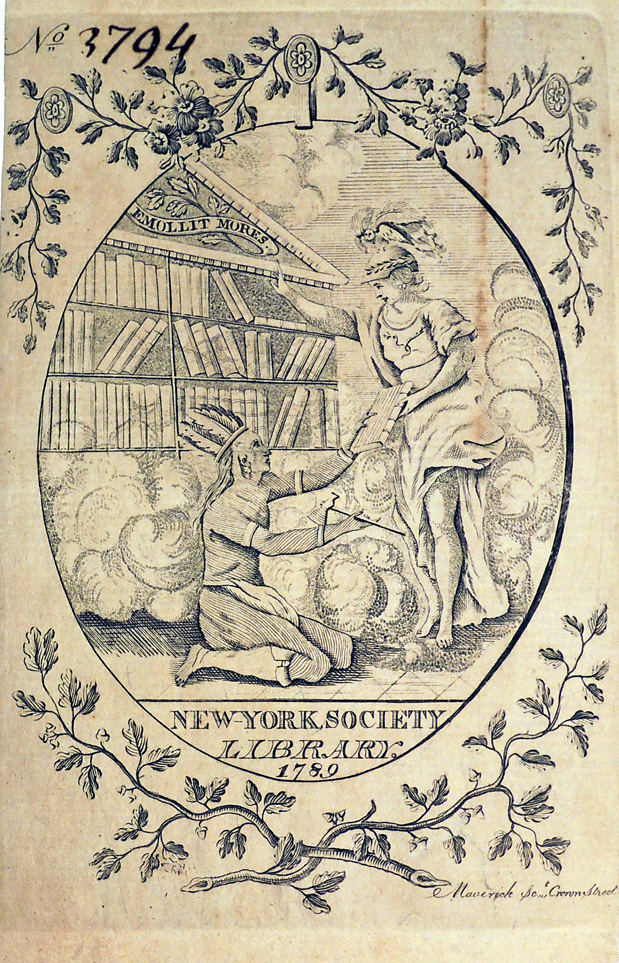 New-York Society Library, 1789. “Emollit Mores” [Learning humanizes or Learning softens character]
New-York Society Library, 1789. “Emollit Mores” [Learning humanizes or Learning softens character]
 Alexander Hamilton, Through. Not Alexander Hamilton (1757-1804)
Alexander Hamilton, Through. Not Alexander Hamilton (1757-1804)
For confirmation, see: Journal of the Ex Libris Society, Vol. 8 (1899). “BOOK-PLATE OF ALEXANDER HAMILTON. Dear Sir,—…Alexander Hamilton had a book-plate— plain armorial, spade shield and crest, with motto — of which one is now in my collection. The Library of the Hospital Ship “Bay State” [ocr errors] No only other copy known to me is inserted in Hamilton’s own copy of “The Federalist,” which is in the possession of a gentleman of New York City, who values this plate at much fine gold, as I happen to know, having made a bid of fifty through the friendly bookseller who mentioned it to me in a casual way, and which he did thrice refuse. It would not interest anyone to know how I finally procured my copy, and I am very unwilling to exploit a mare’s-nest; but I will say that, for the present, this is one of my most cherished plates, ranking next to that of Hamilton’s great friend and admirer, George Washington, and so will it be until some fortunate collector manages to pick up a lot of them in some out-of-the-way corner. I am aware that the authenticity of the ownership of this most important plate rests, for the moment, altogether on what credit one is inclined to place in the aforesaid bookseller, but there was no object to be gained by him in composing a fairy tale of this kind, as the plate he spoke of was in hands, so far as he knew, entirely out of a collector’s reach, and his chance of procuring it simply nil, as has been proved since. After such serious collectors and good authorities as my friends F. E. Marshall and C. E. Clark have had a look at it, there will be time enough to describe this plate; in the meantime, silence is golden.— Yours truly, W. E. Baillie.

